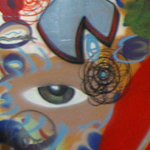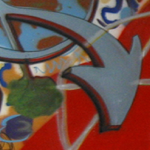





"Children grow sideways as well as up . . . in part because they cannot, according to our concepts, advance to adulthood until we say it's time.”
Kathryn Bond Stockton (2009), The Queer Child, or Growing Sideways in the Twentieth Century, p. 6
In this webtext, our research collective, known as The Crossroads Collaborative, explores the possibilities of youth slam poetry through the Tucson Youth Poetry Slam (TYPS). Our initial research questions are concerned with the ways in which youth slam performance in this space contains the potential for not only response to, but urgent and active movements against, regressive contexts, such as the legislative moves in Arizona that have limited young people’s comprehensive access to narratives of sexuality, health, and rights. Since our research collective is devoted to valuing youth voice, we have included slam poetry in this text with the permission of youth poets and, at times, without our interpretation. Our purpose is to present our research and methods but also to help facilitate an embodied and multimodal experience for readers that does not rely solely on connecting the theories, methods, and poems we discuss into a clear narrative thread. In doing so, we perform our understanding of queer and borderlands spaces in which unfixed identifications, coalitions, and rhetorical practices can be fleeting yet full of possibility.
Our collaborative performance in this webtext also explores the fleeting and powerful possibility of youth slam poetry through site navigation as we involve you, the user, in the urgent movements that TYPS youth seek out and embody in their slam performances. Rapid-fire cadence, lightning rounds of competition and support—slam poetry is fast-paced and urgent, and, as such, stands as a rhetorical practice some Tucson youth have found particularly useful when confronted with legislation and restrictions that seem to emerge just as rapidly. Thus, one way we understand the rhetorical potential of both slam poetry and the embodied multimodality of this webtext is through Kathryn Bond Stockton’s (2009) theorizing of sideways motion, which helps conceptualize the spatiality of youth expression operating under the top-down pressures of adultist social, cultural, and political practices. Ultimately, our webtext asks: To what extent do youth involved in TYPS seek out the sideways, rapid-fire exchange of slam poetry as a critical, fleeting, and playful response to the exigencies of a legislative landscape that seems to shift with the same urgency and speed?





